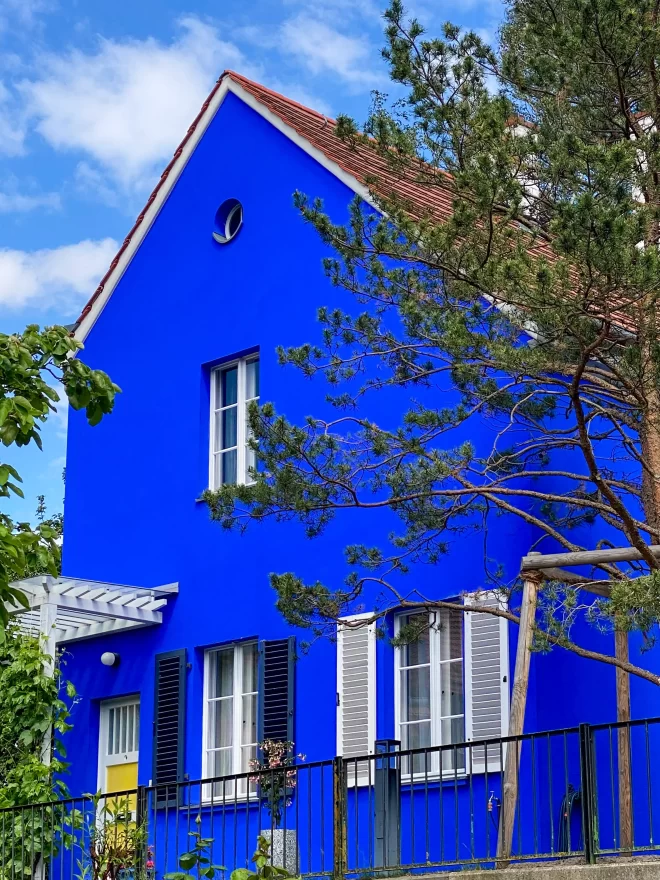1913 – 1916
Architects: Bruno Taut, Heinrich Tessenow (single family house)
Akazienhof 1-26, Am Falkenberg 118-120, Gartenstadtweg 15-99, Berlin Treptow-Köpenick, Germany
Bruno Taut
Bruno Taut was commissioned by the Gemeinnützige Baugenossenschaft Gartenvorstadt Groß-Berlin E.G.m.b.H. to build a housing estate with 129 residential units in three construction phases on a total area of 4.4 hectares, including 81 single-family houses (77 row houses, 2 semi-detached houses) and 48 multi-story apartments in six apartment buildings.
His 1912 master plan for the garden city at Falkenberg in Bohnsdorf originally called for about 1,500 apartments for around 7,500 residents.
Following the example of English terraced houses, the quarters were to be lined up with two-storey rows in the rhythm of the rising terrain. Each house was given its own color and related to the garden and public spaces.
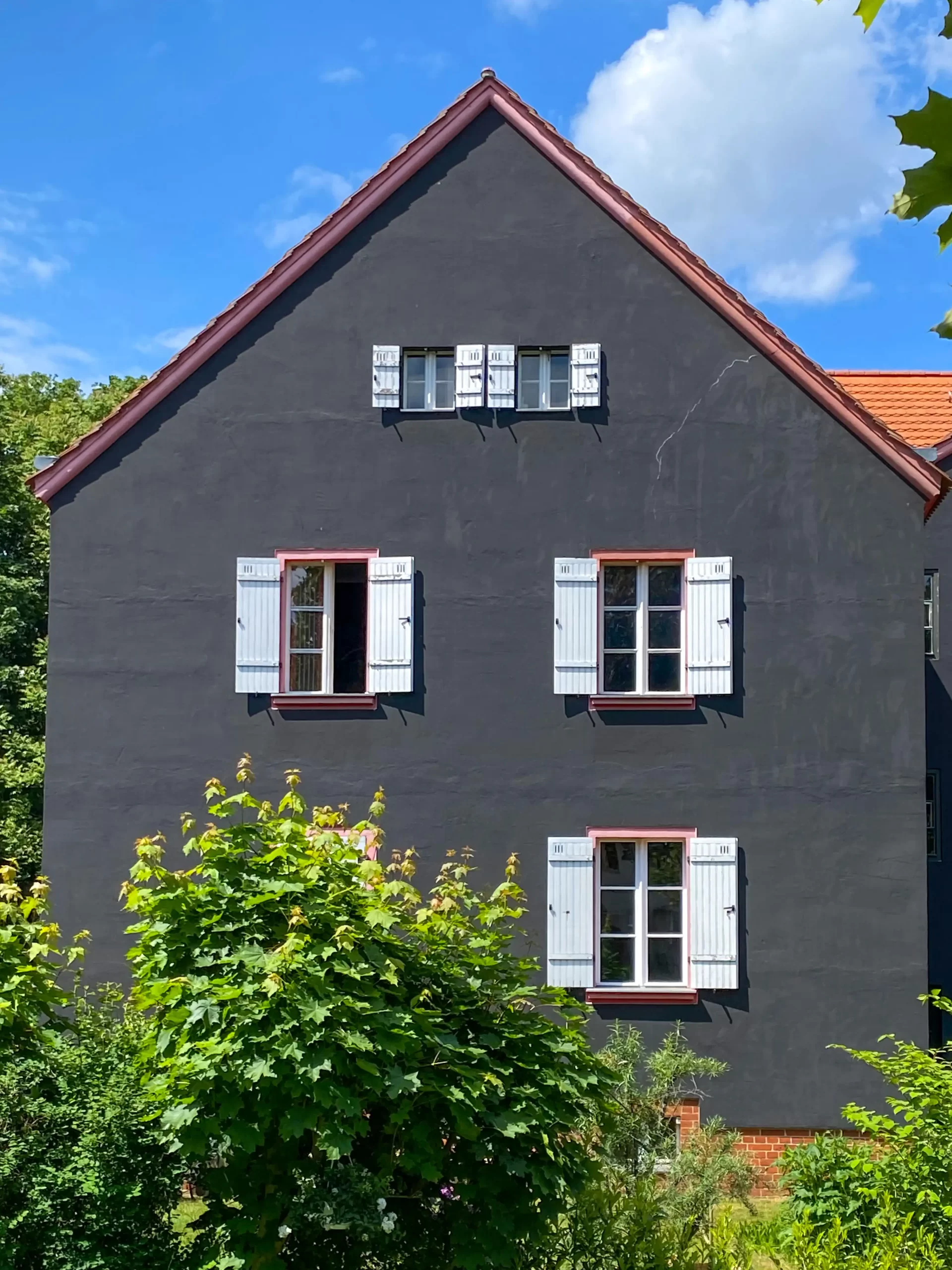
Gartenstadt Falkenberg, 1913-1916. Architect: Bruno Taut. Photo: Daniela Christmann
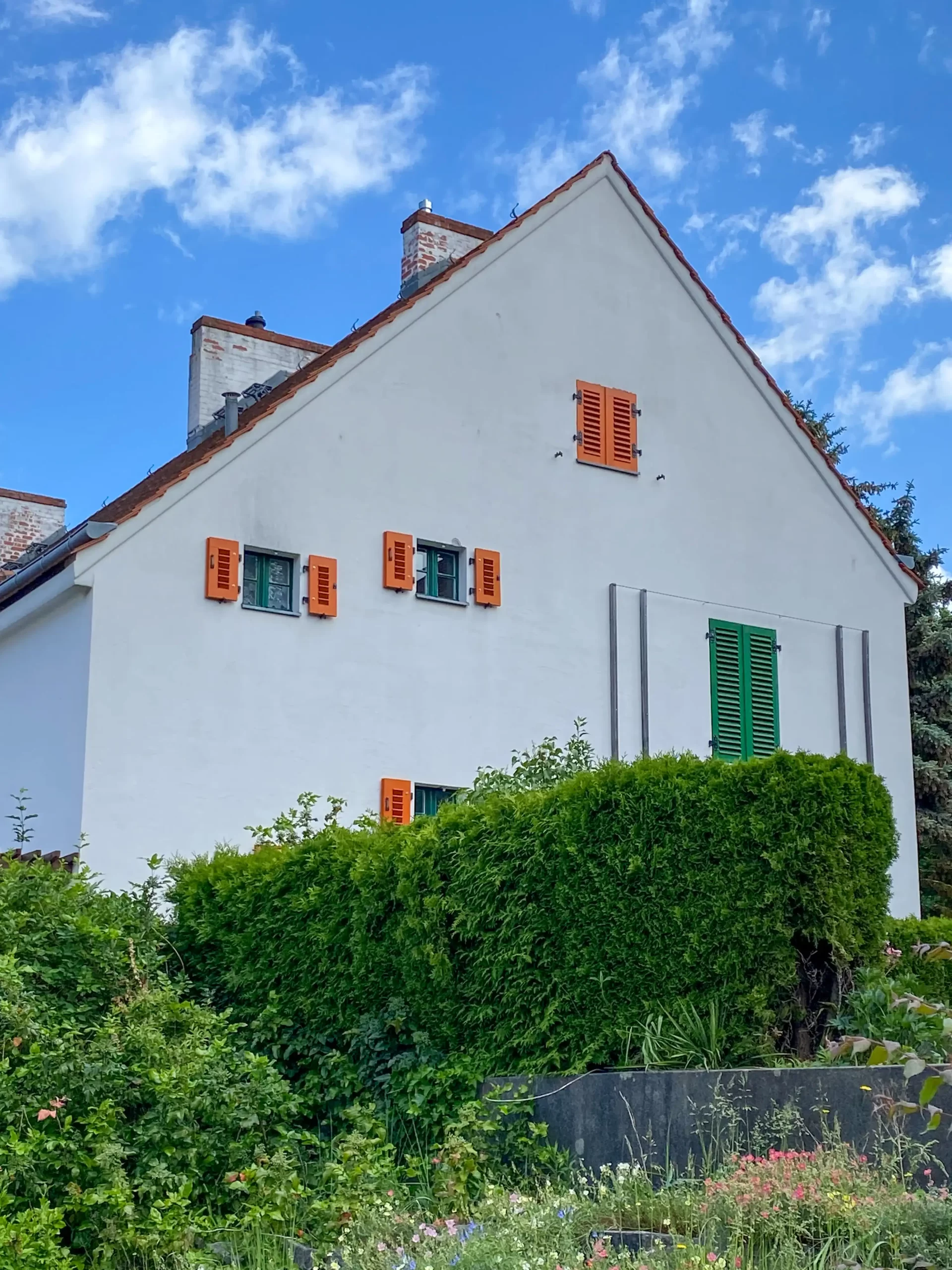
Gartenstadt Falkenberg, 1913-1916. Architect: Bruno Taut. Photo: Daniela Christmann
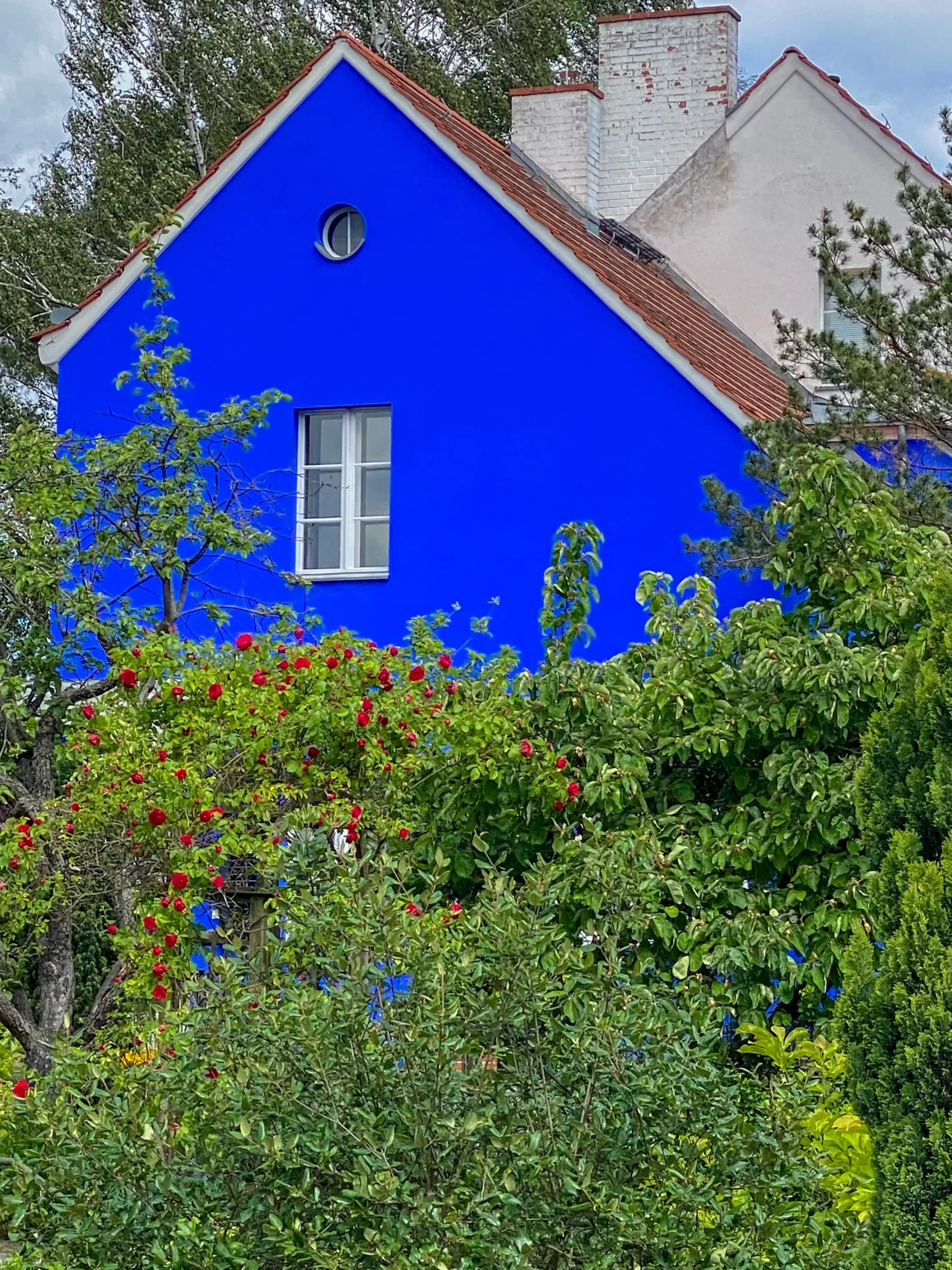
Gartenstadt Falkenberg, 1913-1916. Architect: Bruno Taut. Photo: Daniela Christmann
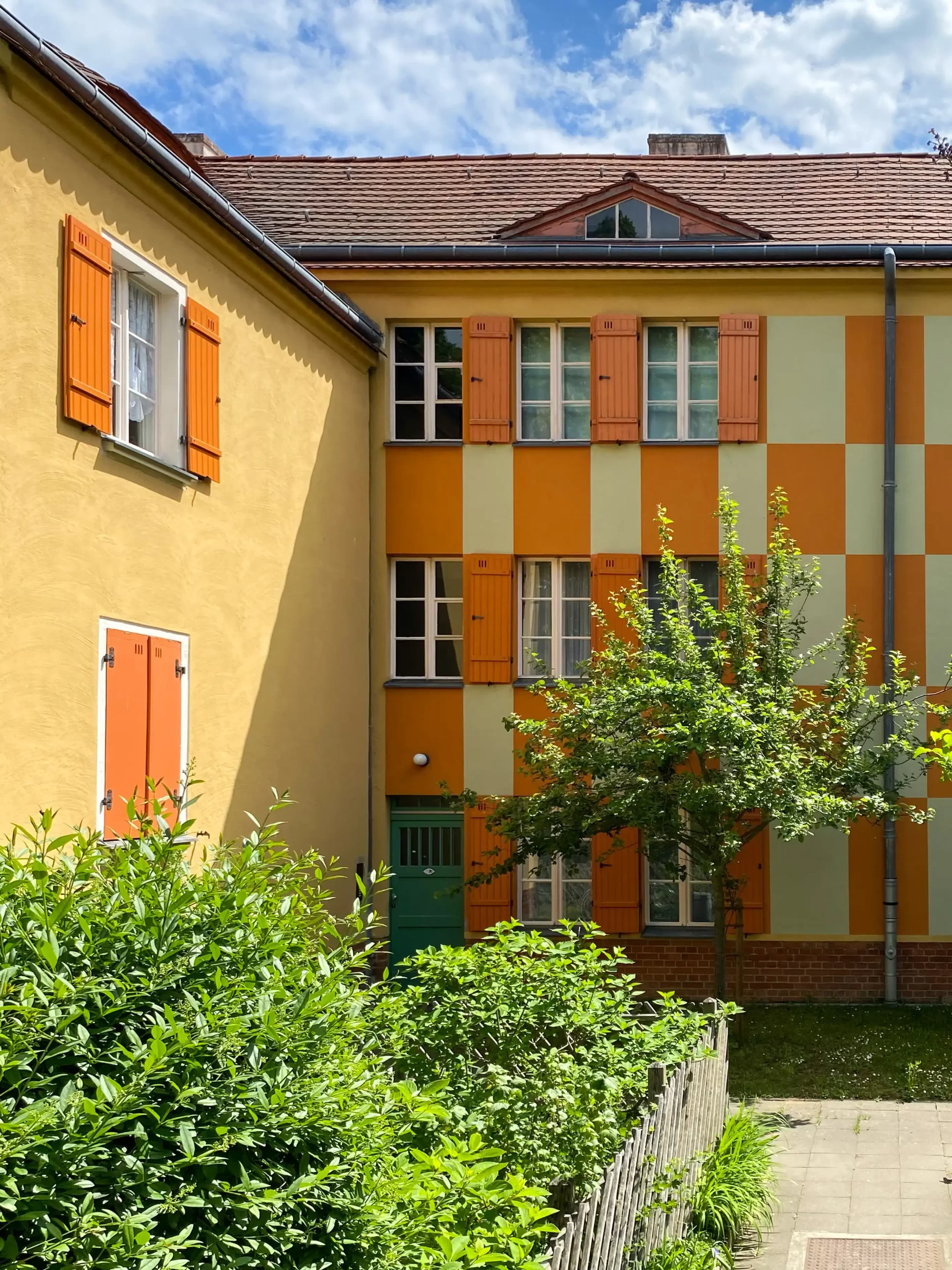
Gartenstadt Falkenberg, 1913-1916. Architect: Bruno Taut. Photo: Daniela Christmann
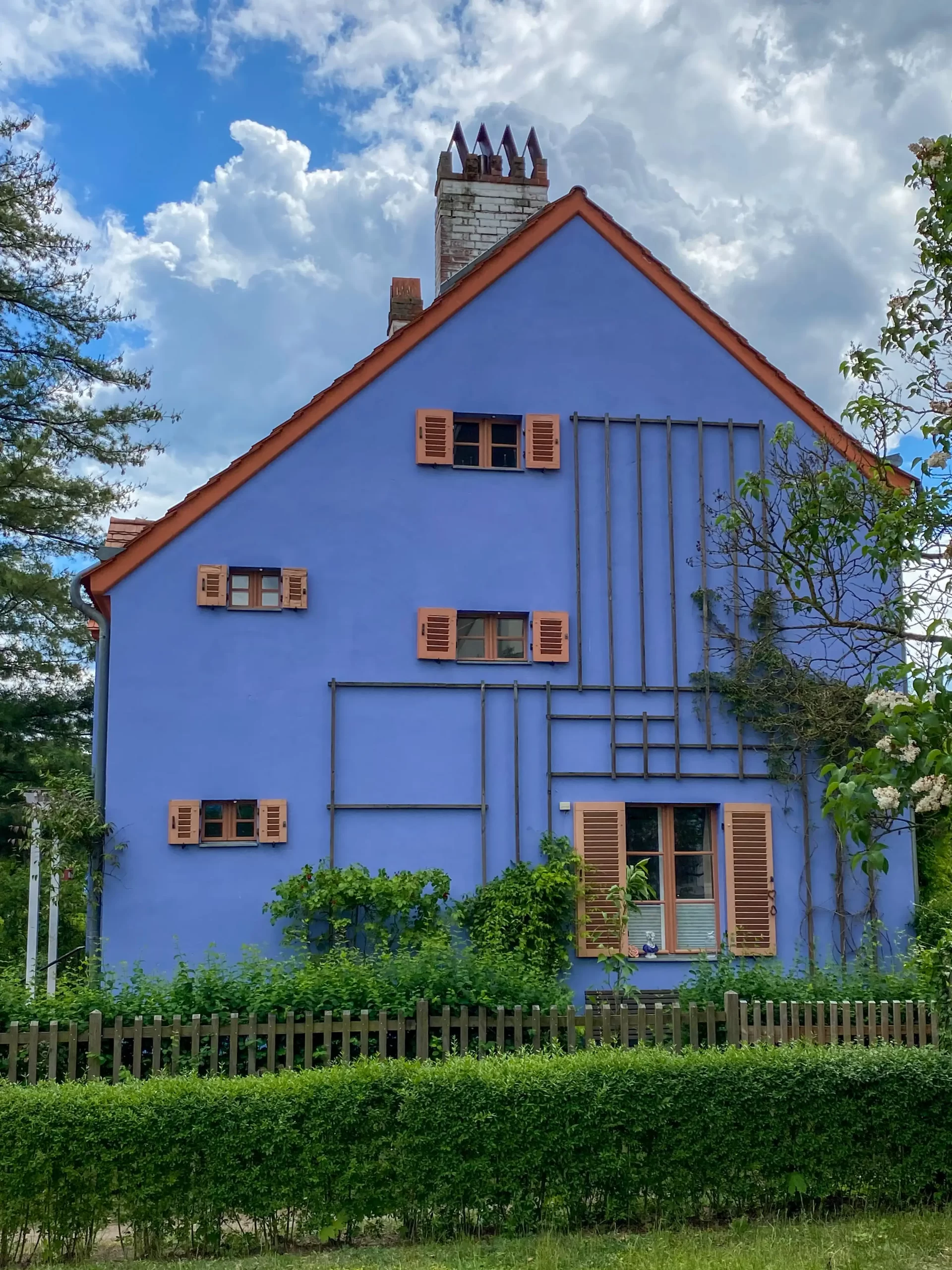
Gartenstadt Falkenberg, 1913-1916. Architect: Bruno Taut. Photo: Daniela Christmann
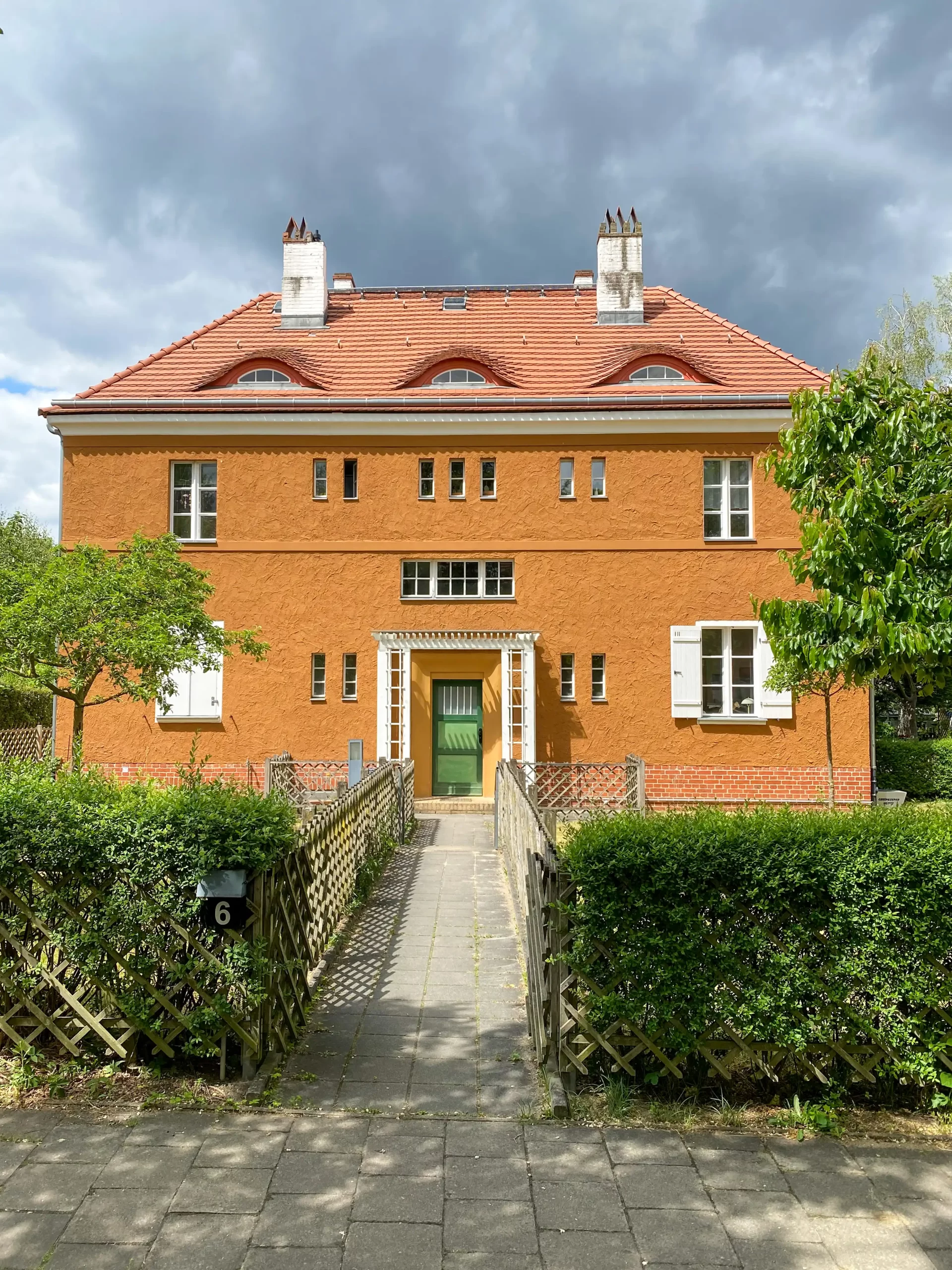
Gartenstadt Falkenberg, 1913-1916. Architect: Bruno Taut. Photo: Daniela Christmann
Garden City
The reformist variant of the garden city was seen by the workers’ movement as an appropriate and forward-looking way to reconcile the advantages and amenities of city life with the hygienic demands of the life reform movement and the social demands of the cooperative movement.
Building Cooperative
On April 12, 1910, thirty life reformers, free trade unionists and social democrats met in the Kleine Philharmonie on Alte Jakobstraße to found the Gemeinnützige Baugenossenschaft Gartenvorstadt Groß-Berlin e.G.m.b.H..
Hans and Bernhard Kampffmeyer, Adolf Otto, Hermann Salomon, and Albert Kohn served as directors of the cooperative.
As early as 1911, the German Garden City Society had invited Albert Kohn on a study trip to England to visit the model settlements of Letchwood Garden City, Welwyn Garden City near London, and Port Sunlight near Liverpool.
Members of the newly founded cooperative had to agree to purchase at least one share of 200 marks and be liable for the same amount.
In accordance with the social orientation of the cooperative, these shares could also be purchased in monthly installments of at least two marks.
Property
By the end of the first fiscal year, 163 members had been recruited. The main problem for the newly founded cooperative was the question of land, since the housing estate to be built had to be connected to the railroad and have gas, water, and electricity.
They almost bought a plot of land in Eichwalde, southeast of Berlin, but finally decided to take advantage of an offer to purchase a remaining area of 300 acres of land in Altglienicke-Falkenberg on favorable terms.
Ludwig Lesser
Landscape architect Ludwig Lesser, who had already made a name for himself in Berlin and the surrounding area through his social commitment and large-scale planning, was commissioned to plan and design the gardens and green spaces.
Falkenberg was the first housing development in Berlin to place such importance on the tenants’ gardens that a garden architect was hired to uniformly plant the plots, which were up to 600 square meters in size.
Trellis fruit, climbing plants, rows of trees and hedges skillfully accentuate the spatial structure of the complex.
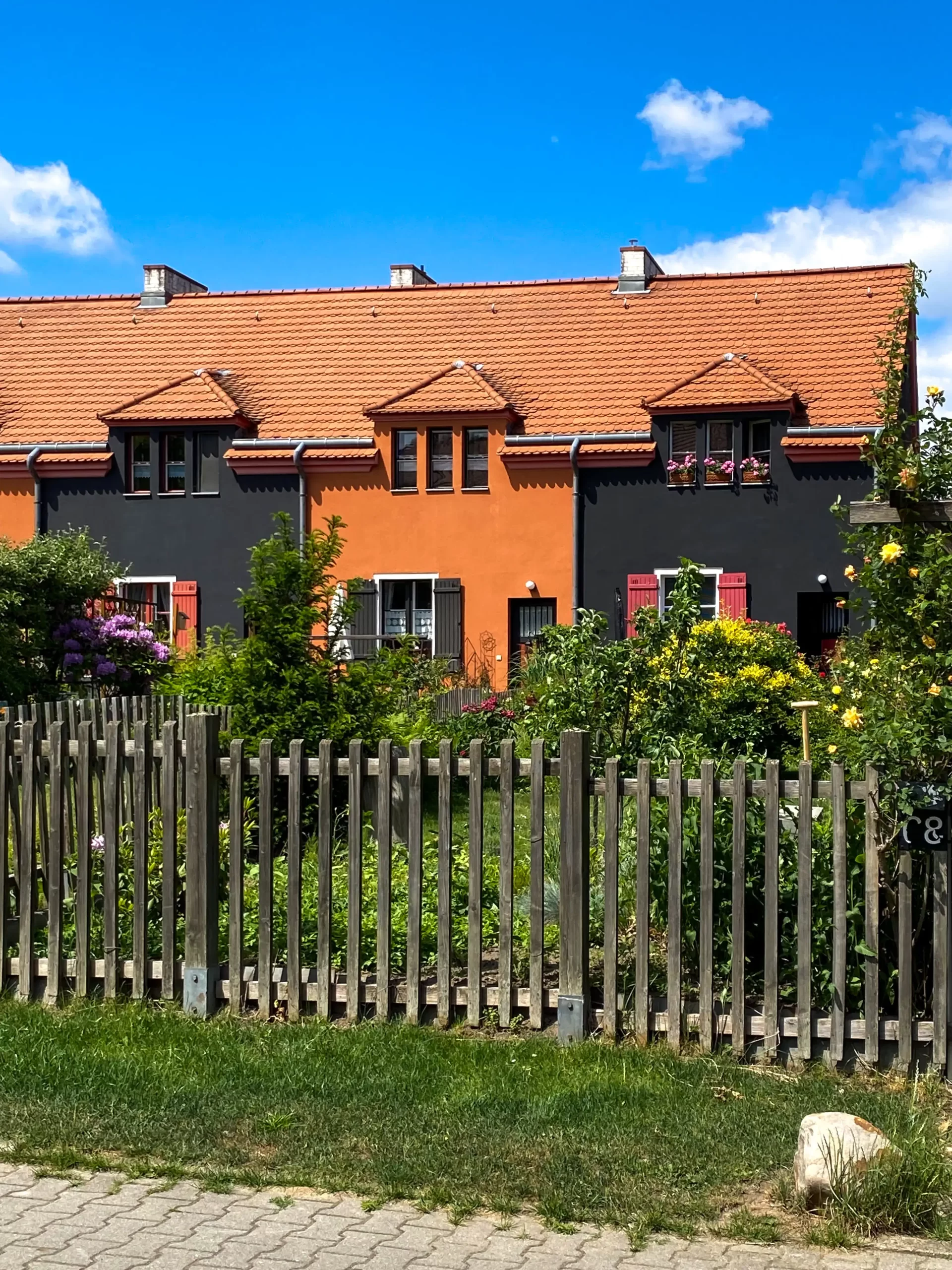
Gartenstadt Falkenberg, 1913-1916. Architect: Bruno Taut. Photo: Daniela Christmann
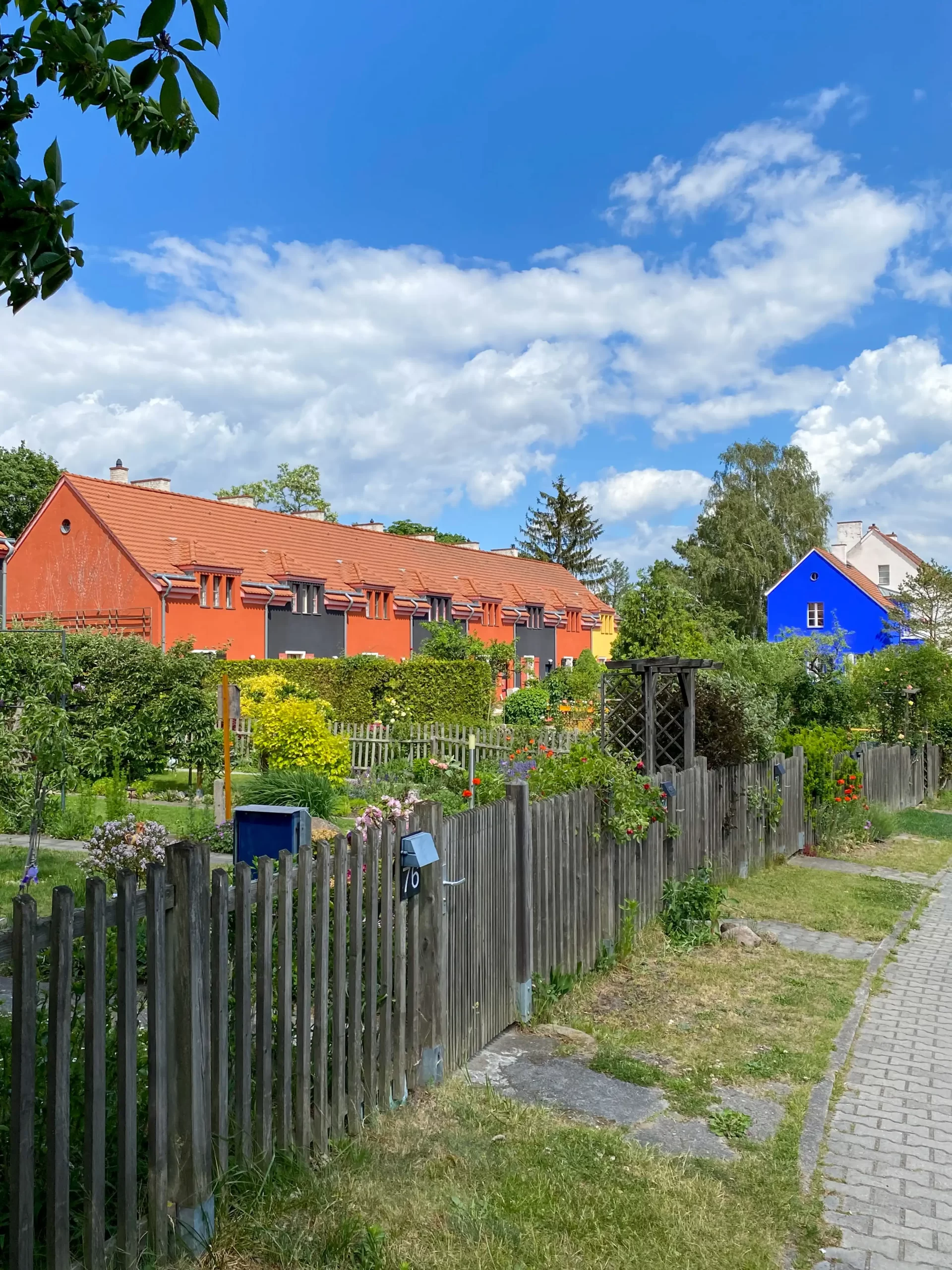
Gartenstadt Falkenberg, 1913-1916. Architect: Bruno Taut. Photo: Daniela Christmann
Planning and Realization
Of the overall plans for the estate, only 34 apartments were realized in the first construction phase around the Akazienhof and a total of 93 apartments in the second construction phase on Gartenstadtweg, as economic difficulties and the outbreak of the First World War interrupted construction activity.
The first phase of construction in 1913 consisted of a residential courtyard (Akazienhof) with an angled community complex around a short cul-de-sac with 34 residential units. A detached house designed by Heinrich Tessenow and a semi-detached house by Taut frame the entrance to the courtyard.
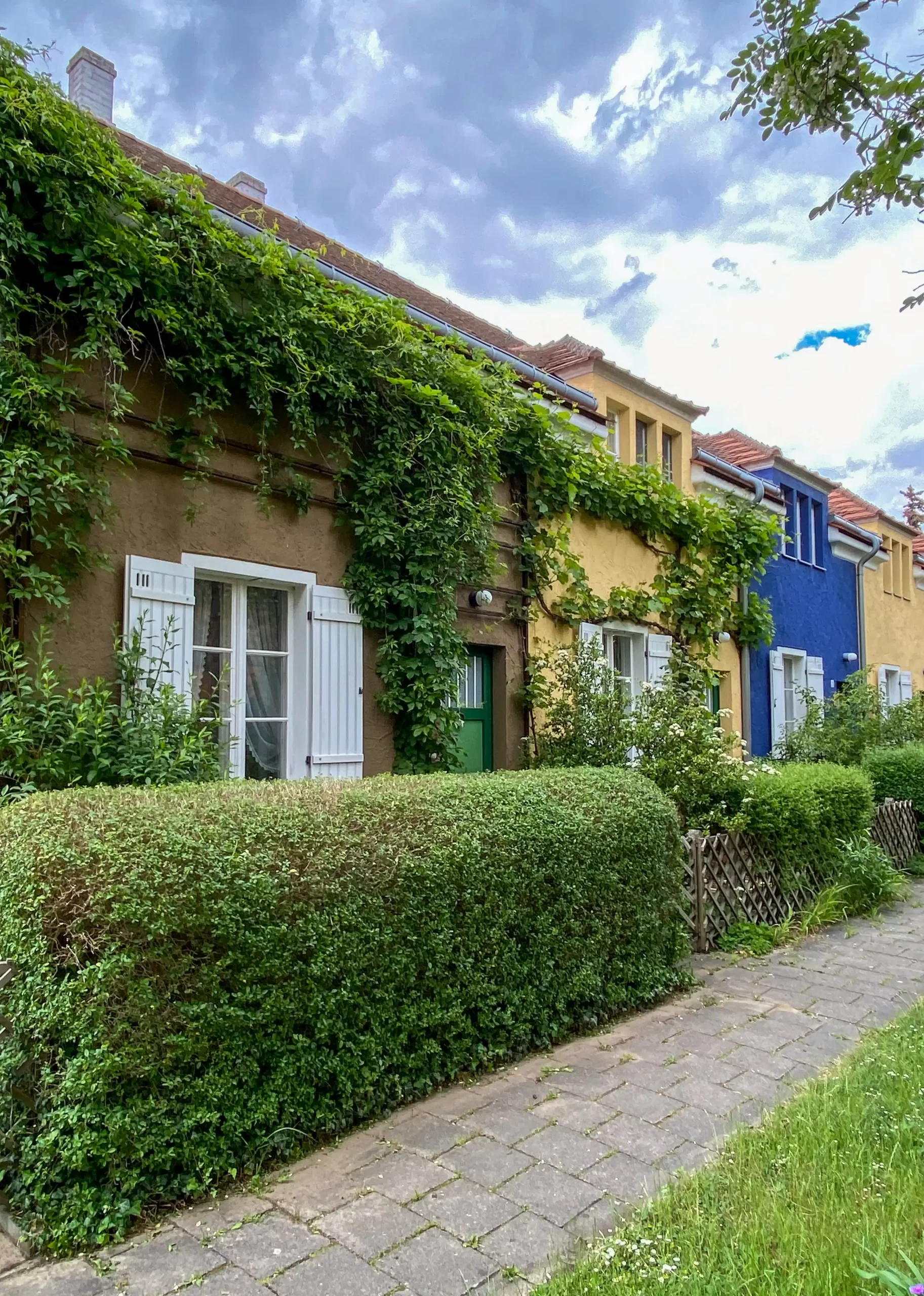
Gartenstadt Falkenberg, 1913-1916. Architect: Bruno Taut. Photo: Daniela Christmann
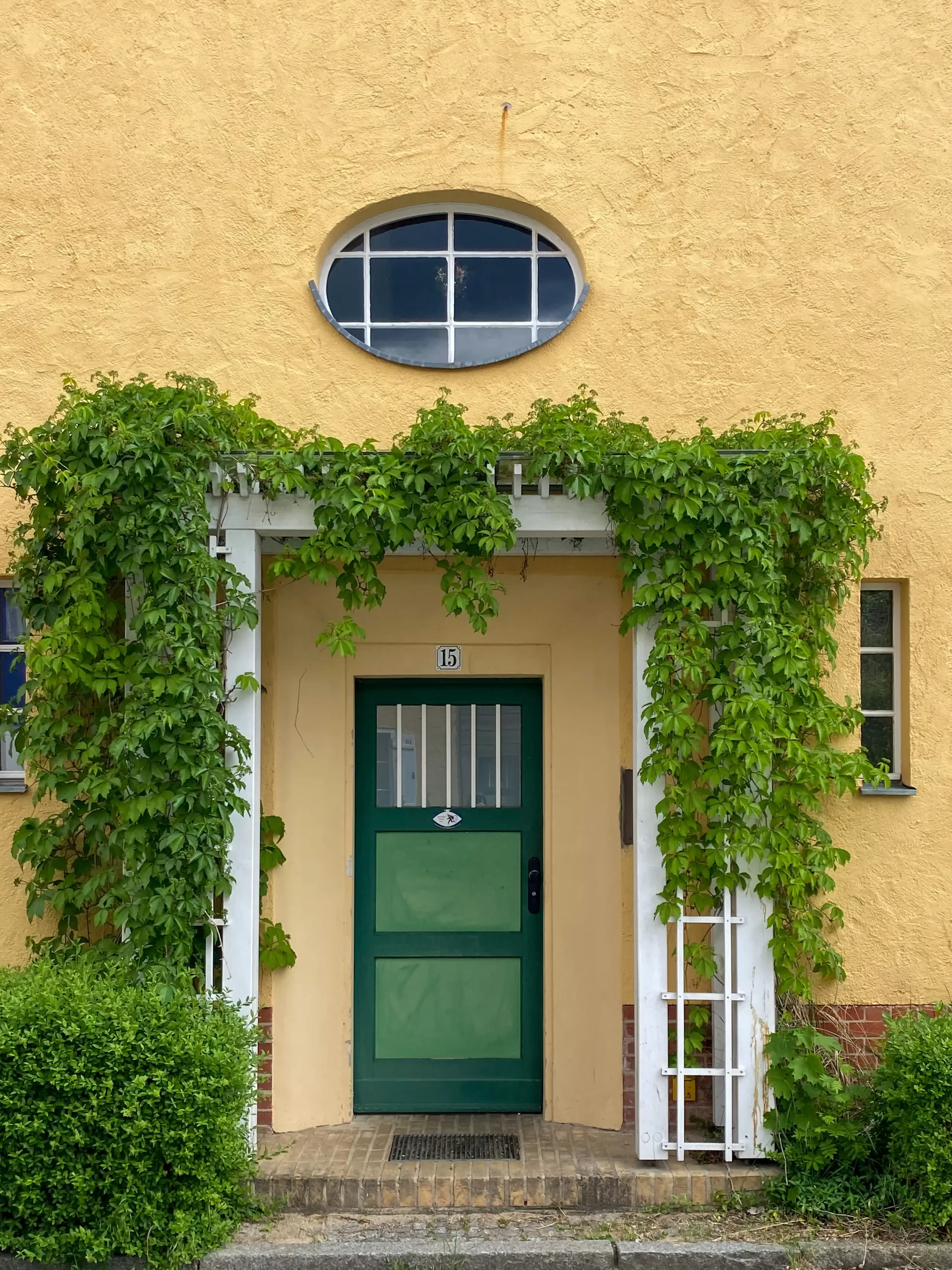
Gartenstadt Falkenberg, 1913-1916. Architect: Bruno Taut. Photo: Daniela Christmann
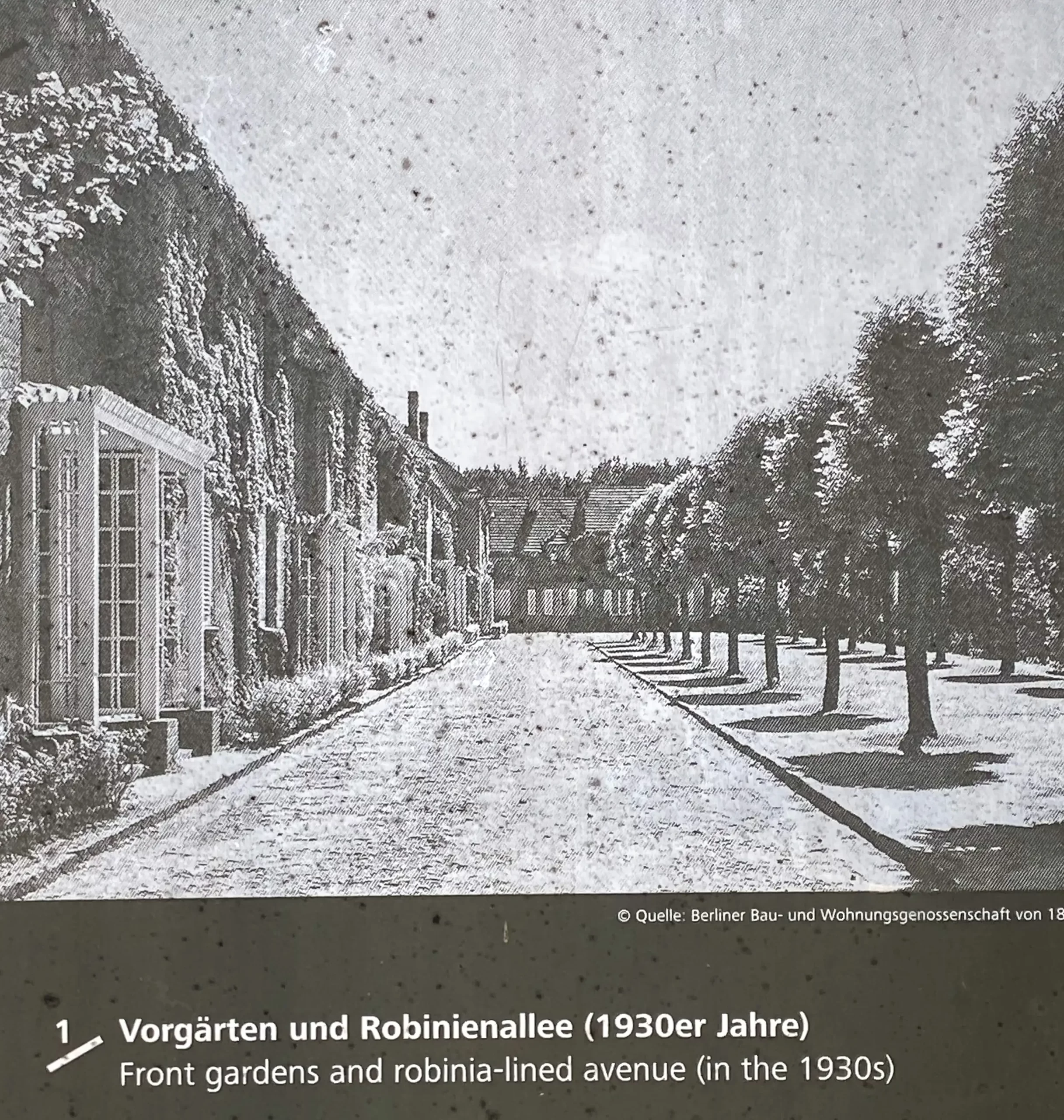
Gartenstadt Falkenberg, 1913-1916. Architect: Bruno Taut. On-site information panel.
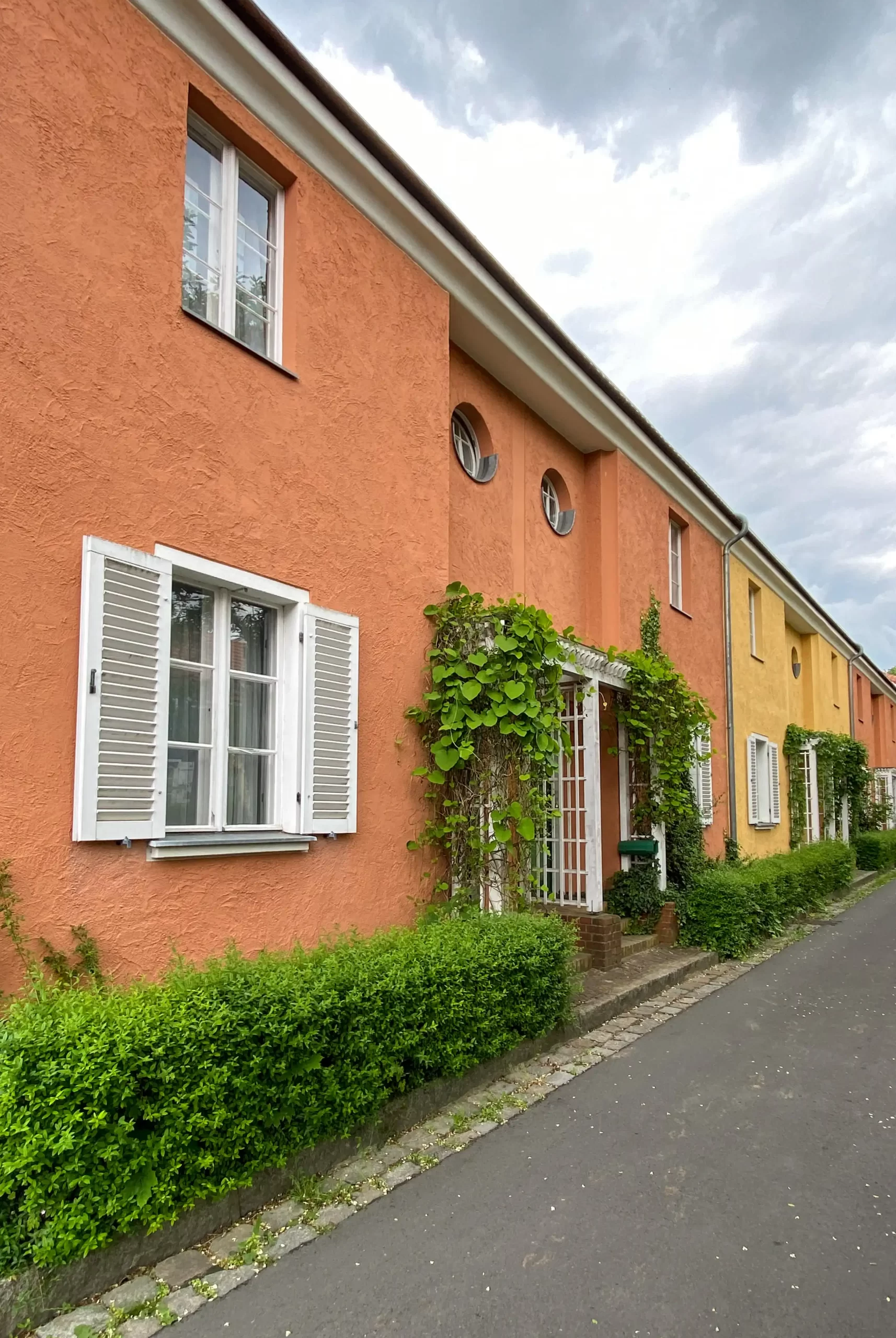
Gartenstadt Falkenberg, 1913-1916. Architect: Bruno Taut. Photo: Daniela Christmann
The second phase of construction consisted of twelve typified groups of houses in hilly terrain. Multiple terraced hillsides with steps, concrete walls, and front yards define the image of the settlement.
When the Greater Berlin Act came into effect on October 1, 1920, Bohnsdorf was first incorporated into Greater Berlin as the district of Köpenick. Between 1924 and 1927, further buildings were constructed according to the plans of Bruno Taut, for example at Dahmestraße 46-68a, Leschnitzer Straße 2, 4-47 and Pitschener Straße 1-8.
Heinrich Tessenow
Heinrich Tessenow designed the detached single-family house at Am Falkenberg 119 as part of the estate.
He designed it for the family of the social reformer Adolf Otto, who was a founding member of the German Garden City Society. Otto and his family lived in the house, which also housed the Grünau office of the German Garden City Society until their emigration in 1933.
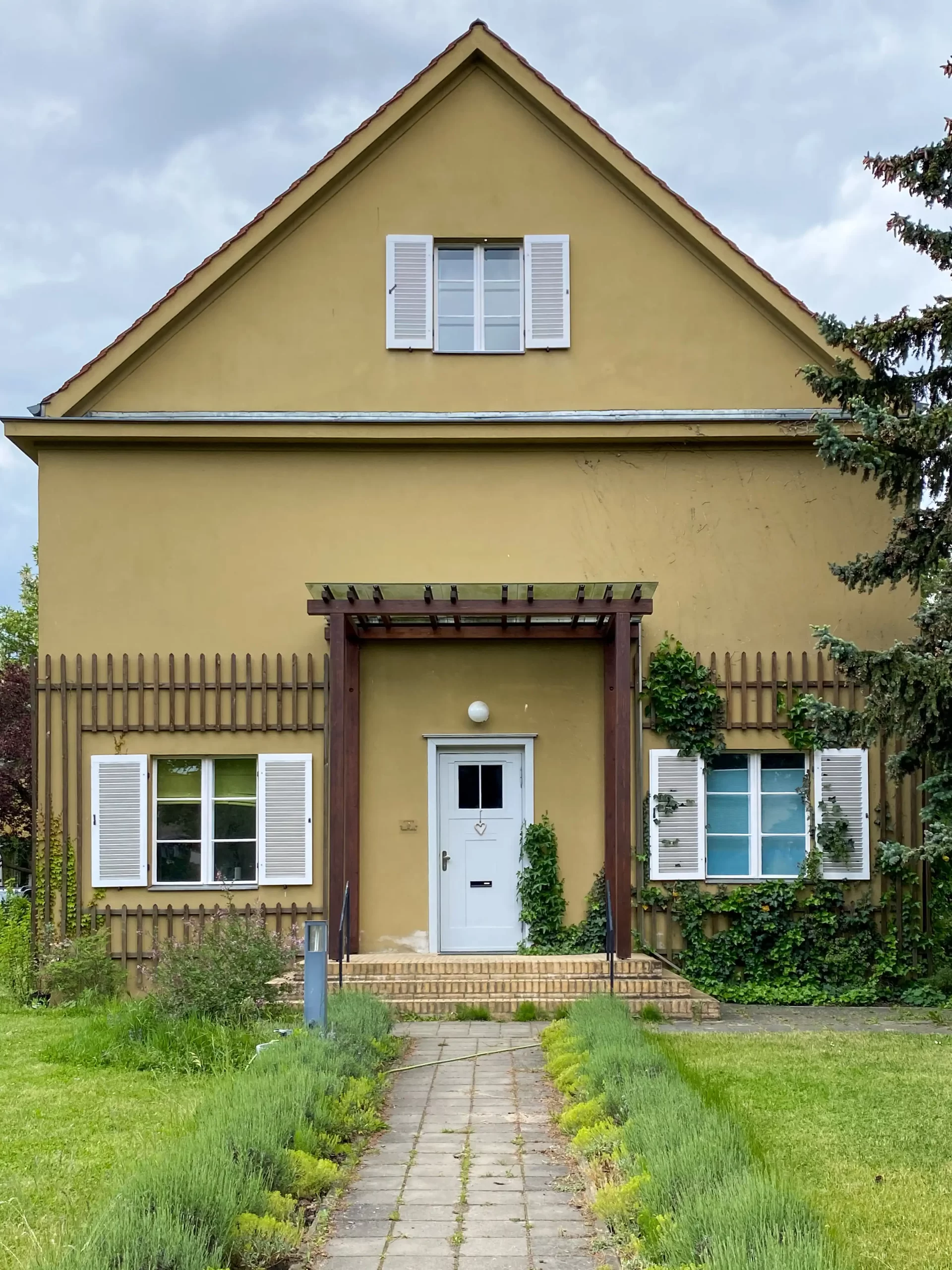
Gartenstadt Falkenberg, 1913-1916. Architect: Heinrich Tessenow. Photo: Daniela Christmann
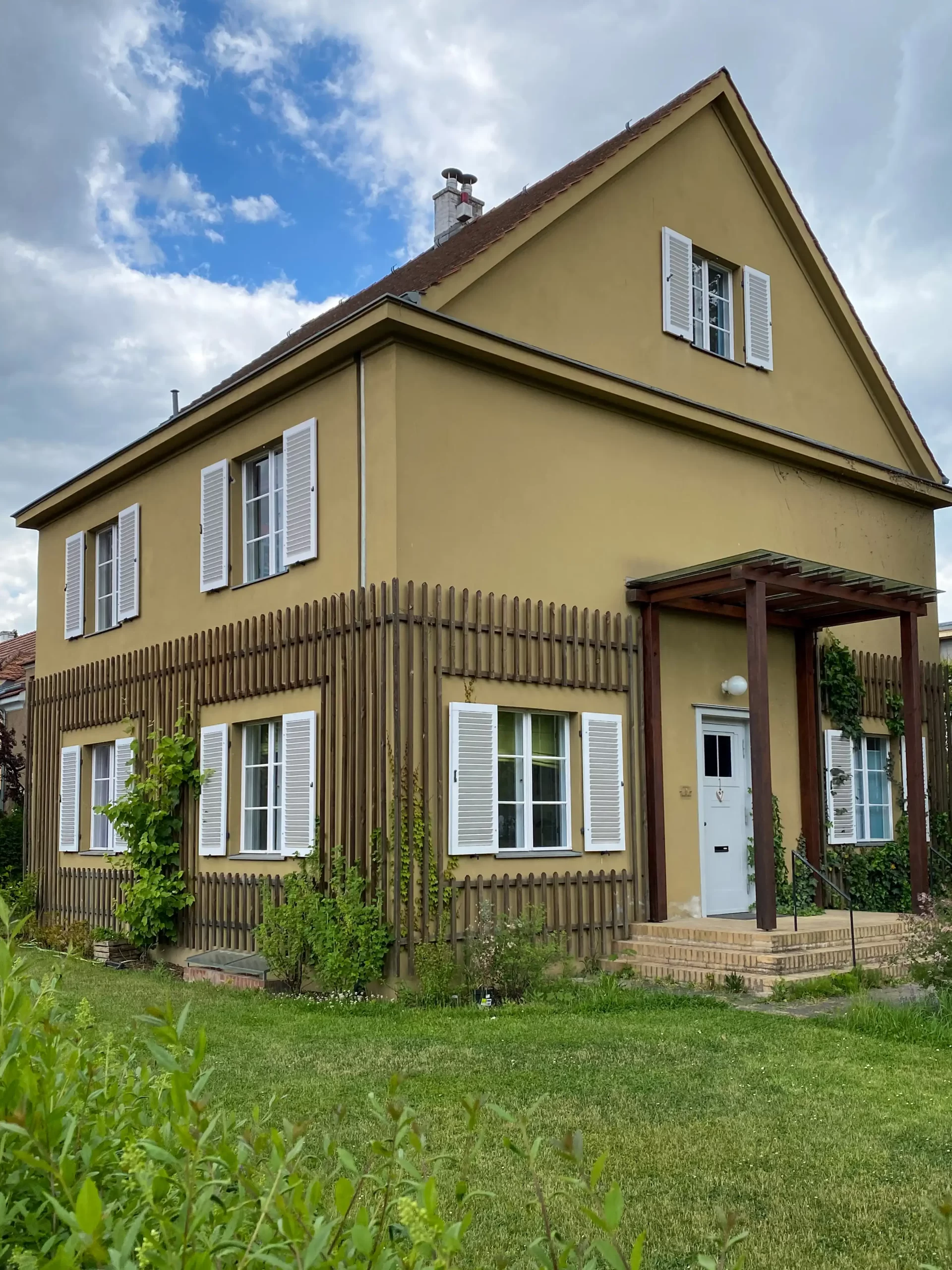
Gartenstadt Falkenberg, 1913-1916. Architect: Heinrich Tessenow. Photo: Daniela Christmann
World Heritage Site
Gartenstadt Falkenberg is the oldest of the six modernist housing estates in Berlin that were inscribed on the UNESCO World Heritage List in 2008.
It is still fully committed to the garden city idea developed in England by Ebenezer Howard and the associated cooperative housing and living model.
The houses in the first phase are grouped around the Acacia Courtyard. In the second phase, Taut staggered differently proportioned house types in offset rows and groups.
Color Scheme and Design Elements
A key feature of the development is its intense color scheme, which has earned it the nickname “Tuschkastensiedlung.
Contrasting building details such as doors, windows, shutters, balconies and cornices accentuate the effect of the facade colors and form a design link between all the buildings.
Taut made the color independent of the building material and created an effective and cost-effective means for a new aesthetic in residential construction.
Cross-painted plaster on the facades, red plain tile roofs, tall rectangular mullioned windows, white-painted chimneys, and wood elements such as shutters and pergolas emphasize the rural, organic character of the development.
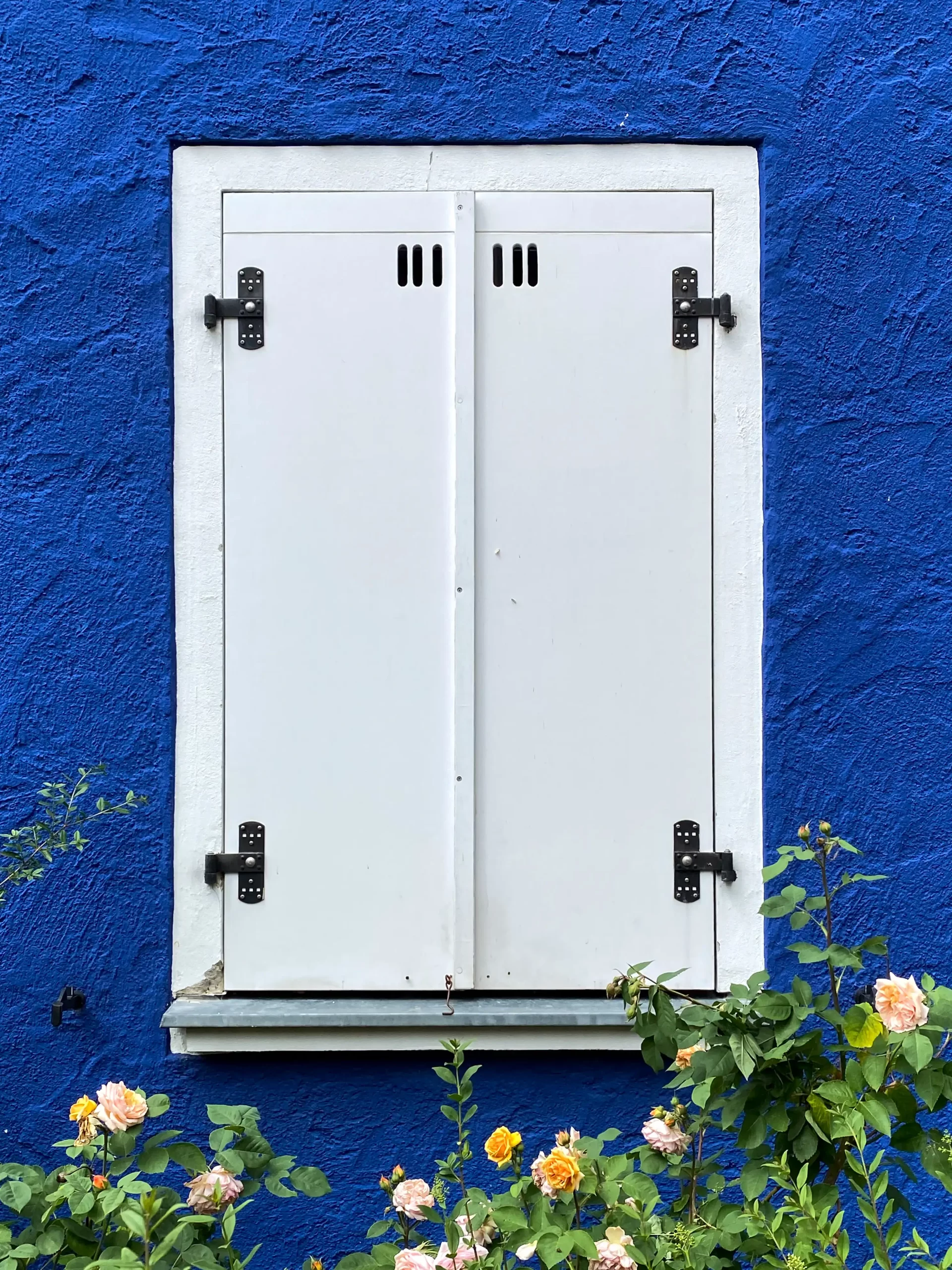
Gartenstadt Falkenberg, 1913-1916. Architect: Bruno Taut. Photo: Daniela Christmann
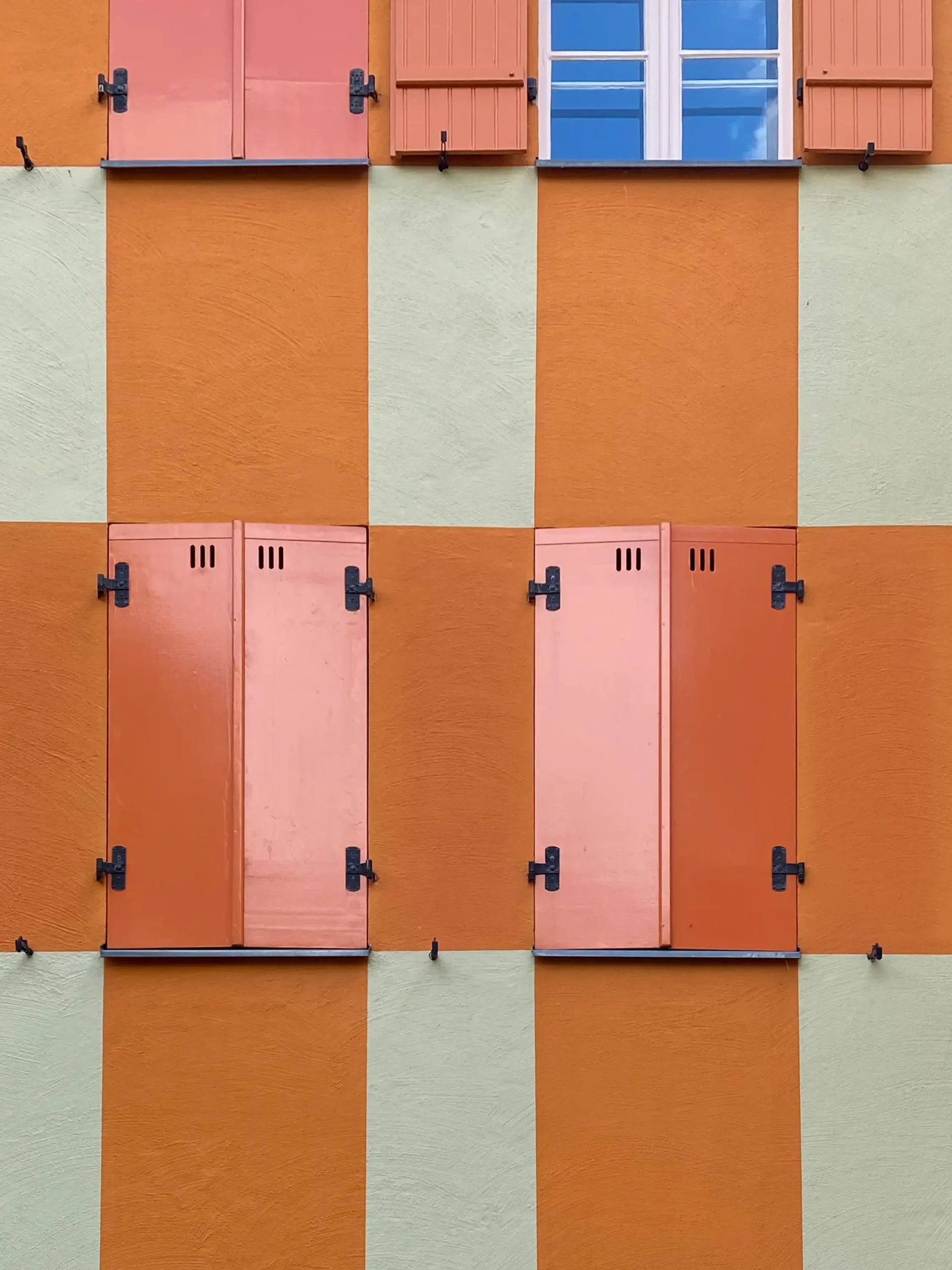
Gartenstadt Falkenberg, 1913-1916. Architect: Bruno Taut. Photo: Daniela Christmann
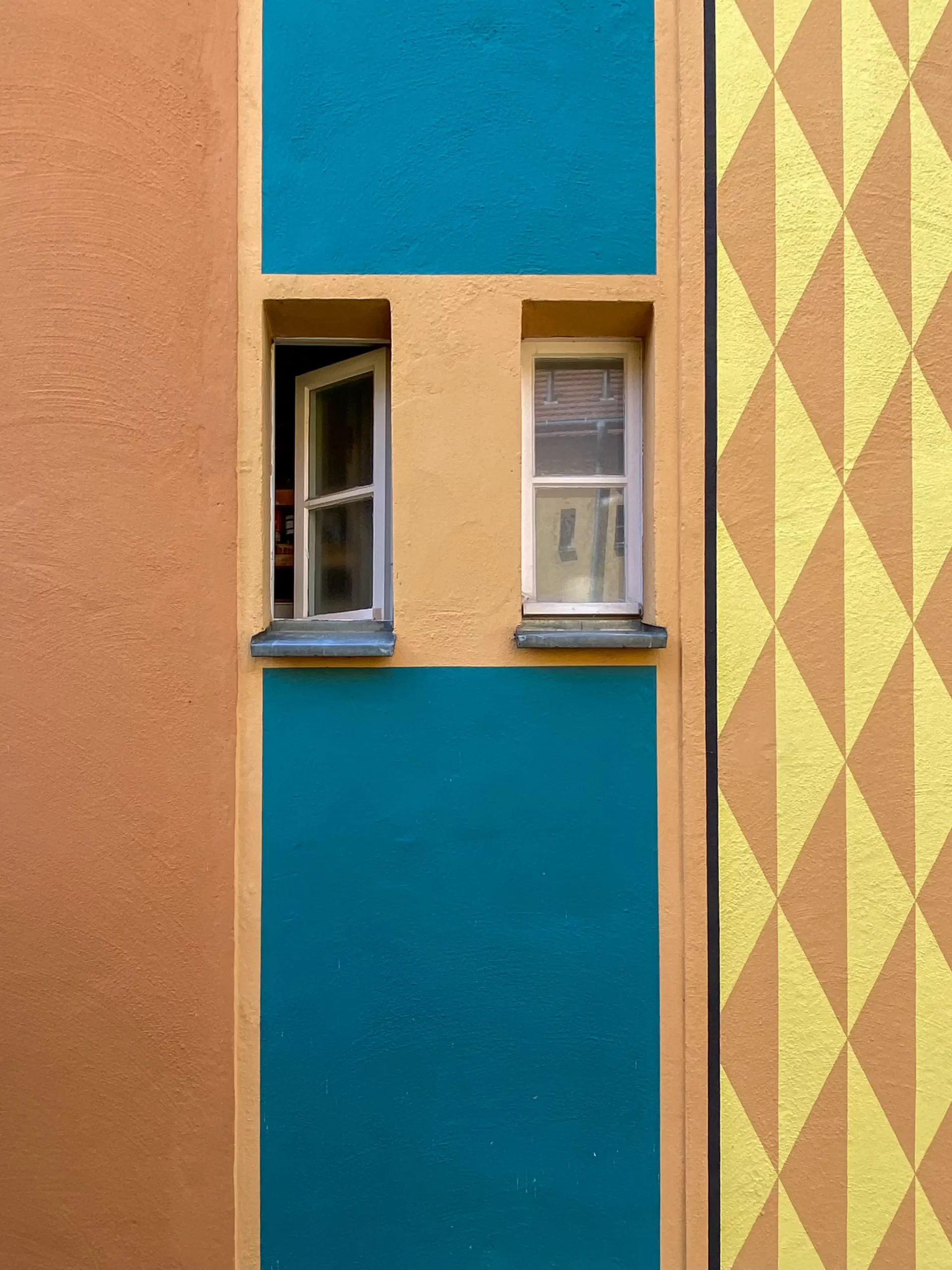
Gartenstadt Falkenberg, 1913-1916. Architect: Bruno Taut. Photo: Daniela Christmann
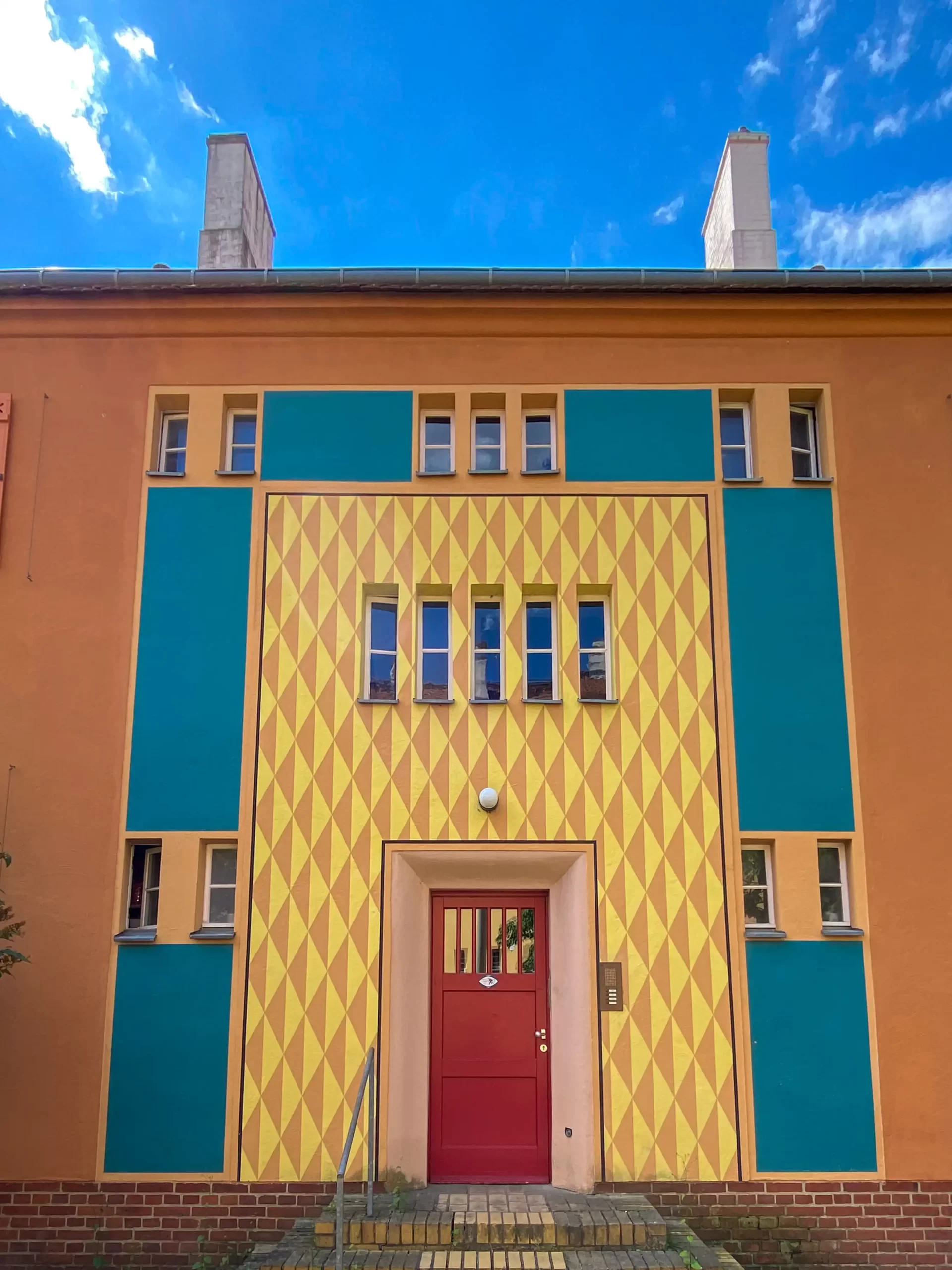
Gartenstadt Falkenberg, 1913-1916. Architect: Bruno Taut. Photo: Daniela Christmann
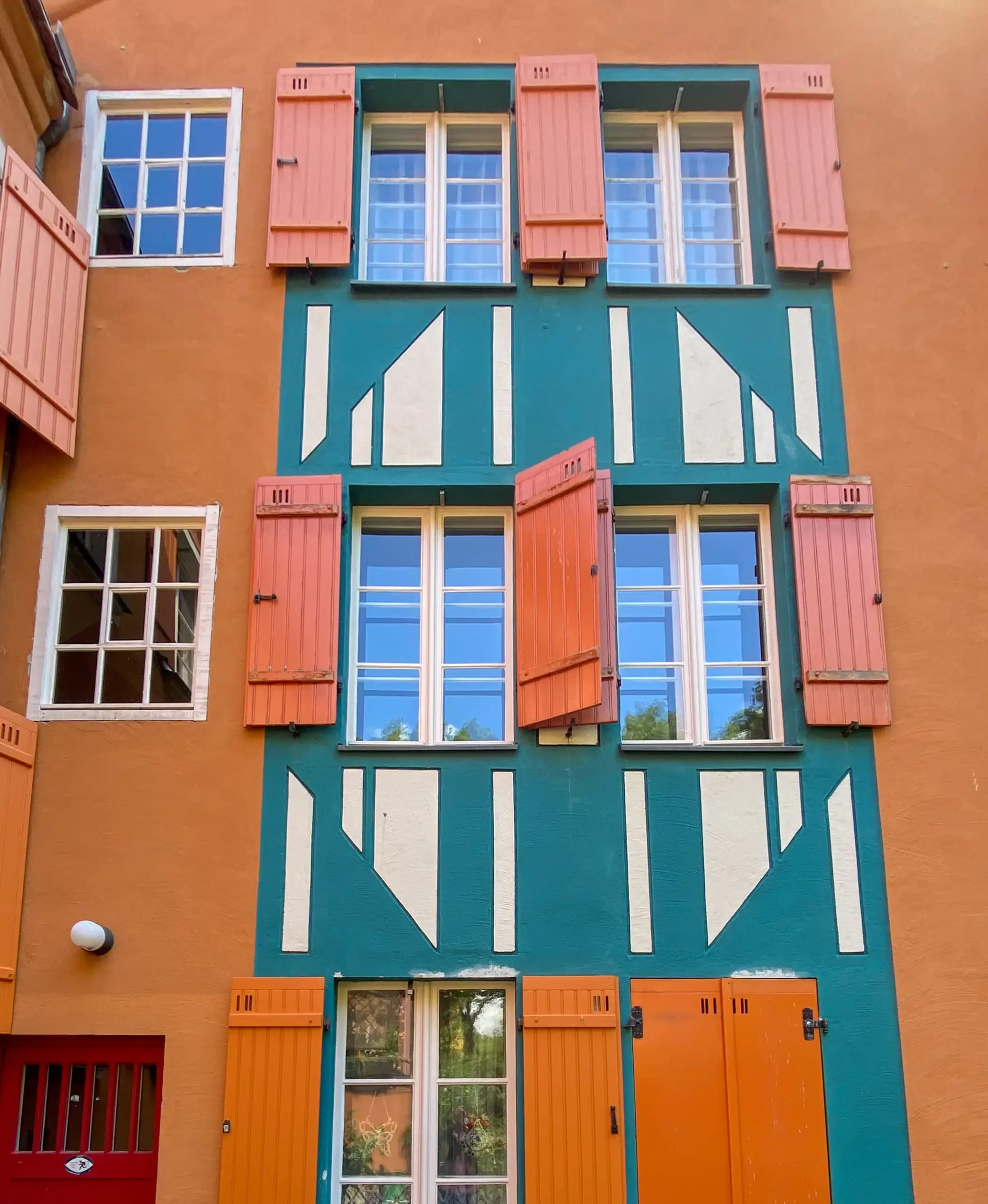
Gartenstadt Falkenberg, 1913-1916. Architect: Bruno Taut. Photo: Daniela Christmann
Architectural Design
The varied design of the streets and squares is remarkable: In Akazienhof, the main house is not in the middle of the street, but off to the right.
The apartment building on the northwest side is set back a full house length.
The two entrance buildings are also not in line with the neighboring row houses or with each other, which reinforces the impression of an organically grown complex.
Renovation and Expansion
The estate is now owned by the Berliner Bau- und Wohnungsgenossenschaft von 1892 eG.
The estate was renovated from 1991 to 2002 by Brenne Architects on the basis of conservation studies.
Since 2001, a gradual extension has been carried out on the basis of competitions by Quick Bäckmann Quick & Partner, hmp hertfelder &montojo planungsgesellschaft mbH, Blumers Architekten Generalplanung und Baumanagement GmbH and Anne Lampen Architekten BDA.
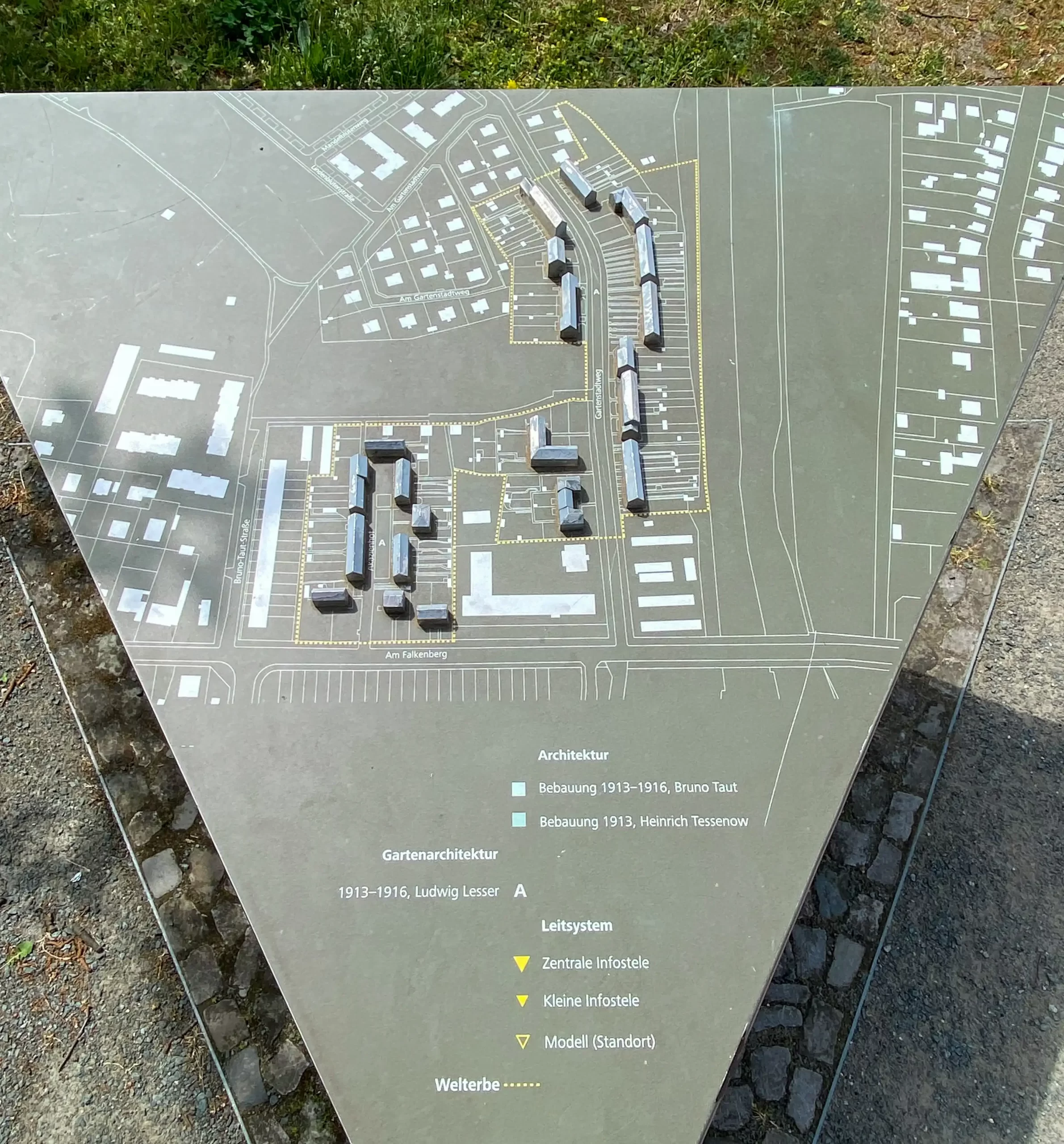
Gartenstadt Falkenberg, 1913-1916. Architect: Bruno Taut. On-site information panel.

